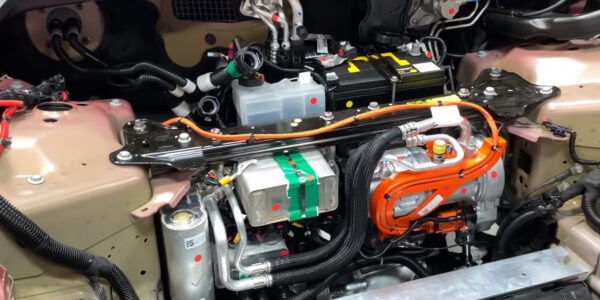Pepsico takes delivery of first Tesla Semi truck
- PostedPublished 22 March 2023
Tesla has launched and handed over its first Class 8 battery-electric Semi truck to PepsiCo at its Gigafactory in Reno, Nevada, five years after the first prototype was unveiled with a claimed range of 800km.

An initial low production run of 100 Semis is planned for 2023 and although no price has been announced – it had originally been quoted as equivalent to AU$268,000 – if Tesla’s passenger range is anything to go by, the cost will have increased dramatically compared with claims made at the reveal event.
Tesla will be using its own Semi trucks for deliveries between its factories while it gears up for the 2000 pre-orders it says it has on its books.
Fully laden with 36.7 tonnes of cargo, the Tesla Semi’s triple-motor drivetrain will achieve 800km range using a 1000kWh battery and regenerative braking.
The Semi’s claimed laden 0-100km/h time of 20 seconds is reduced to just five seconds when unladen. Tesla says the Semi is three times more powerful than the most powerful diesel truck, able to tackle steep inclines at faster speeds, and requires no special driver training.
Tesla’s Semi design is radically different to a conventional truck and follows most of Tesla’s streamlined styling language with an ultra-low drag coefficient of 0.36, half that of a regular truck. It features a central driving seat, with two large touchscreens on either side of the steering wheel that display blind spot feeds to complement the conventional mirrors, along with navigation and vehicle data.
At its launch, Tesla CEO Elon Musk stressed the Semi’s green credentials, stating that although in the USA trucks only represent one per cent of road vehicles, they are responsible for about 20 per cent of all emissions and 37 per cent of all particulate matter.

The Semi truck uses Tesla’s new V4 megawatt charger. Tesla senior manager of Semi truck engineering Dan Priestley said: “You’re actually immersing the conductor in the coolant … It means that we can really shove a lot of current in a very, very small place. So for those who have charged their cars at a V3 Supercharger and the cable’s nice and manoeuvrable, it’s the same thing here, but now we’re just shoving a megawatt through it instead.”
Back in 2017 many thought the Semi’s range claims were impossible, and that if Tesla’s lower operating cost assumptions were true it would be so significant that companies who did not electrify would soon be priced out of the transportation market. Tesla stated that because electricity is 2.5 times cheaper per 1.6km than diesel, operators could save almost AU$300K over 3 years.
Once a price minus any grants is announced, alongside real-world testing, businesses will finally be able to assess if Tesla’s Semi makes financial sense, or if this really is the end of the road for diesel trucks and not just another of Elon Musk’s exaggerations.
- CategoriesIn SightGlass
- Tagselectric truck, electric trucks, SightGlass News Issue 28, Tesla, Tesla Semi





